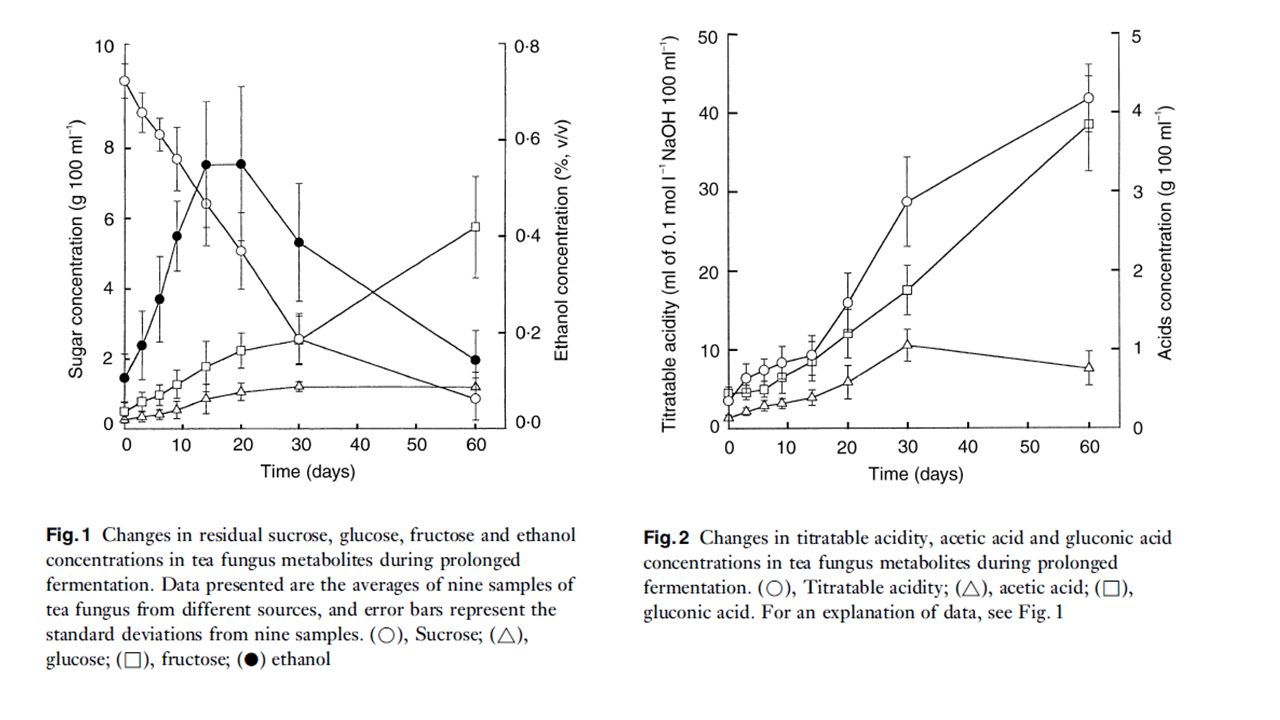In the world of beverages, innovation is a constant quest for perfection. One such marvel that has emerged from this pursuit is Naturally Fermented Sparkling Tea, a non-alcoholic delight that marries the elegance of fine teas with the effervescence of sparkling wine. But what sets Naturally Fermetned Sparkling Tea apart and infuses it with its unique character? The answer partly lies in the art of prolonged fermentation, particularly in the intriguing role played by gluconic acid.
The Journey of our naturally fermented sparkling tea: A Deep Dive
We were first intrigued by research conducted by C. Chen and B.Y. Liu delved into the intricacies of prolonged fermentation in tea fungus, shedding light on the transformations that occur over time. In this study, the dynamics of major components and microbes in tea fungus broth during a 60-day fermentation period were meticulously observed and analysed.
The Dance of Acids and Sugars
One of the fascinating discoveries highlighted in the research is the steady increase of gluconic acid during prolonged fermentation. Gluconic acid, a key player in the flavour profile of tea fungus broth, gradually rises to prominence as fermentation progresses. This rise contributes significantly to the overall taste and acidity of Sparkling Tea.
As the fermentation journey unfolds, a delicate interplay between organic acids and sugars takes center stage. Sucrose, the initial fuel for fermentation, undergoes hydrolysis to yield glucose and fructose. Interestingly, while fructose exhibits a steady increase throughout fermentation, glucose follows a different trajectory with a lower initial production rate. This divergence in sugar metabolism adds layers of complexity to the fermentation process.

Unraveling the Taste Profile
The culmination of these biochemical transformations gives birth to a tantalising taste profile in Naturally Fermented Sparkling Tea. The gradual rise of titratable acidity, coupled with the ascent of gluconic acid, contributes to a well-balanced and nuanced flavour experience. The final product boasts a harmonious blend of top notes, astringency, and acidity reminiscent of its alcoholic counterparts.
Crafting Quality Through Fermentation Mastery
The research underscores the significance of controlled fermentation in shaping the desired quality of our Sparkling Tea. By monitoring and manipulating fermentation time, we relised that we could fine-tune the composition of tea fungus metabolites. This control allows for the optimisation of taste, aroma, and mouthfeel, ensuring a consistently exceptional beverage.
Unlocking the Potential of Sparkling Tea
The insights gleaned from the study pave the way for a deeper appreciation of fermentation. Beyond being a mere beverage, our Sparkling Tea emerges as a testament to the artistry and science of fermentation. Its allure lies not only in its effervescence but also in the meticulous craftsmanship that transforms humble ingredients into a sparkling symphony for the senses.
In Conclusion
As we raise our glasses to the enchanting world of Naturally Fermented Sparkling Tea, let us celebrate the wonders of prolonged fermentation. Through this alchemy of time and transformation, Naturally Fermeted Sparkling Tea transcends expectations, offering a non-alcoholic alternative that captivates with its complexity and charm. Cheers to the magic of fermentation and the tantalising taste of Sparkling Tea!
Fig 1. and Fig 2.: Chen, C., & Liu, B. Y. (2000). Changes in major components of tea fungus metabolites during prolonged fermentation. Journal of Applied Microbiology, 89, 834-839.







